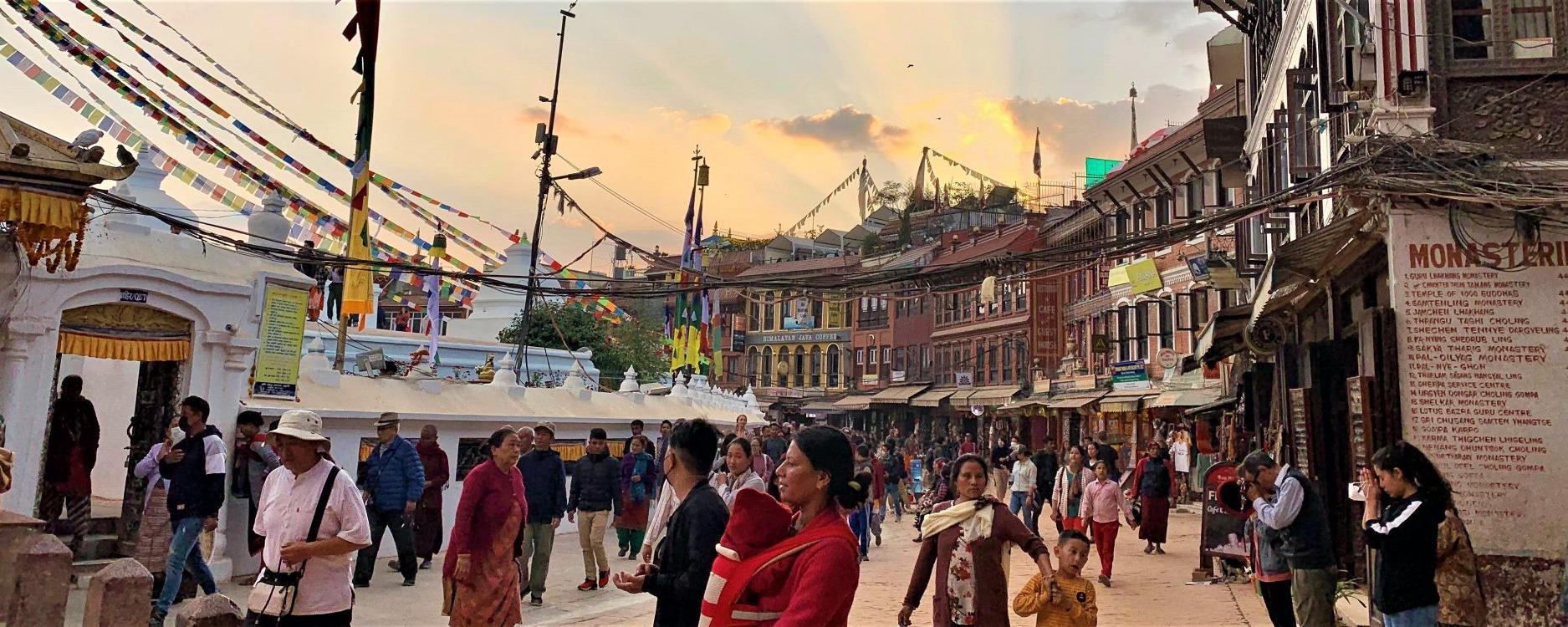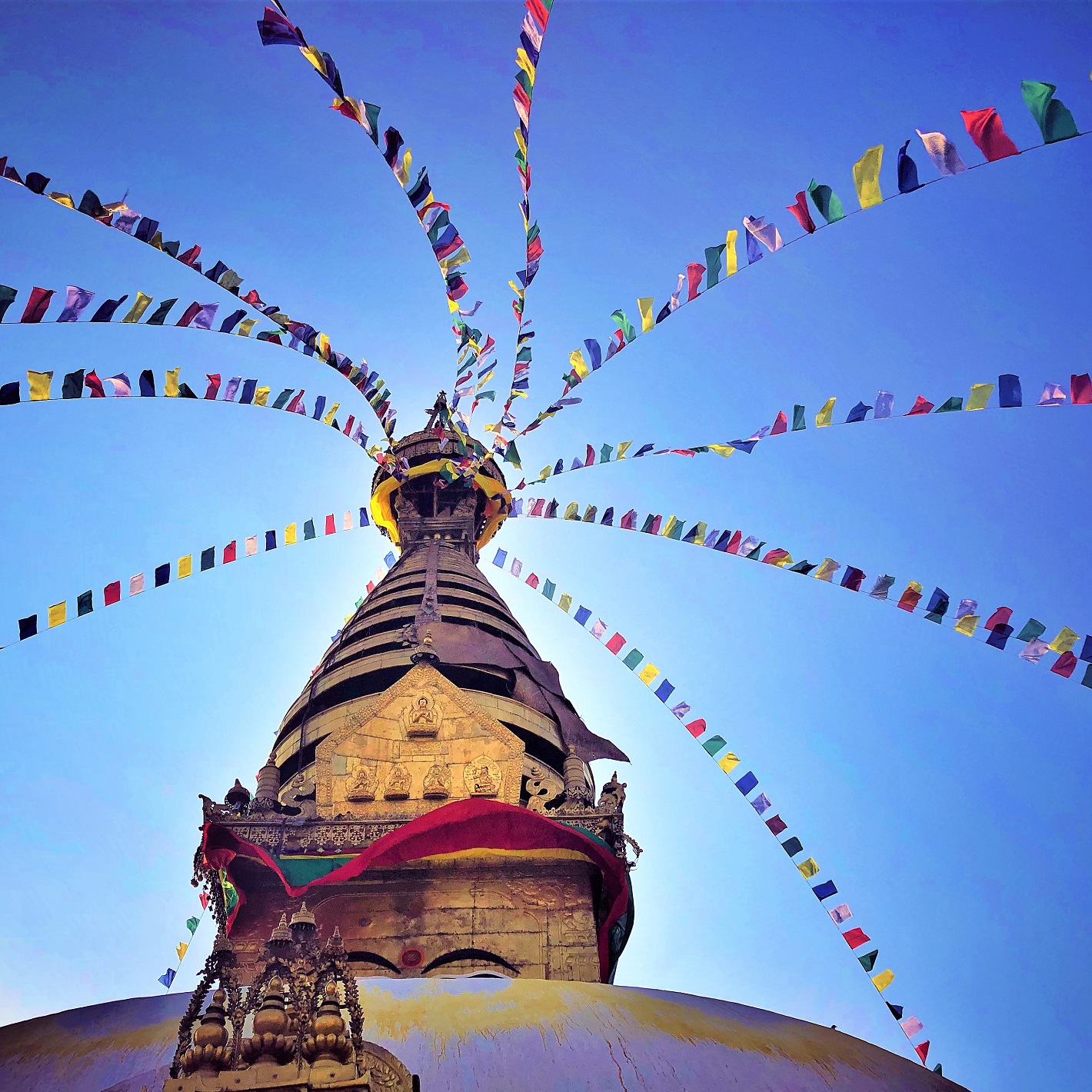

The dome of the Boudhanath Stupa is topped by a four-sided pinnacle that carries on each side – thus gazing at the four directions – the mysterious image known as the Eyes of Buddha, a motif of such evocative appeal that it is ubiquitously reproduced as one of Nepal’s best-known symbols. The terrace of Licchavi House affords a direct view where one can contemplate this masterpiece. It is said that seeing the Eyes of Buddha just once can lead to spiritual liberation.
Possibly the world’s largest Buddhist Stupa, Boudhanath is listed by UNESCO as a World Heritage monument. As a flourishing pilgrimage site, it is alive with the chants and chatter of people circumambulating the enormous whitewashed dome. They move round and round on a path flanked by shrines and prayer wheels on one side, and busy shops on the other, peacefully uniting the sacred and the mundane. The aroma of incense from gigantic burners rises up to mingle with hanging prayer-flags which flutter in the Himalayan breeze.
The story of the Stupa’s foundation seems to hang too, scattered across legends from both Nepalese and Tibetan sources. Perhaps the most popular, ascribed to the Tibetans, is that of a poor farmer widow who wishes to build a structure to house the relics of Buddha Kashyapa, the predecessor of Shakyamuni. She cleverly overcomes the jealousy of local dignitaries and wins the king’s support to start construction.
The Stupa is eventually completed by her four sons who, on the strength of their aspirations to serve the Dharma in future lives, are reborn centuries later as the four leaders who establish Buddhism in Tibet: King Trisong Deutsen, the Bodhisattva Śāntarakṣita, the Master Padmasambhava and the Translator Vairotsana. Hence it is said that a wish made at the Great Stupa is bound to come true.
For centuries – especially during the Licchavi Dynasty (c. 4th to 8th century AD) – the Nepalese shared the growing complex of the Stupa as a restful oasis and a meeting place for merchants, seekers and explorers on the grueling journey between Tibet and India. At that time the Kathmandu Valley – till then largely unnoticed – had become a major cultural, commercial, spiritual and intellectual hub bridging South and Central Asia.
Now, just as life goes on around the Stupa’s mandalic space; embracing and churning the views, emotions, stories, aspirations and pains of varied multitudes, so does Licchavi House intend to act, on a small but active scale, as a resourceful hub where the positive energy of the past – magnified by the power of this unique location – is harnessed and spun into the future through the integral development of the human spirit in action. This is to render homage to local history and tradition in a way that builds, upon the urgent needs of today, a mandala of harmonious living.